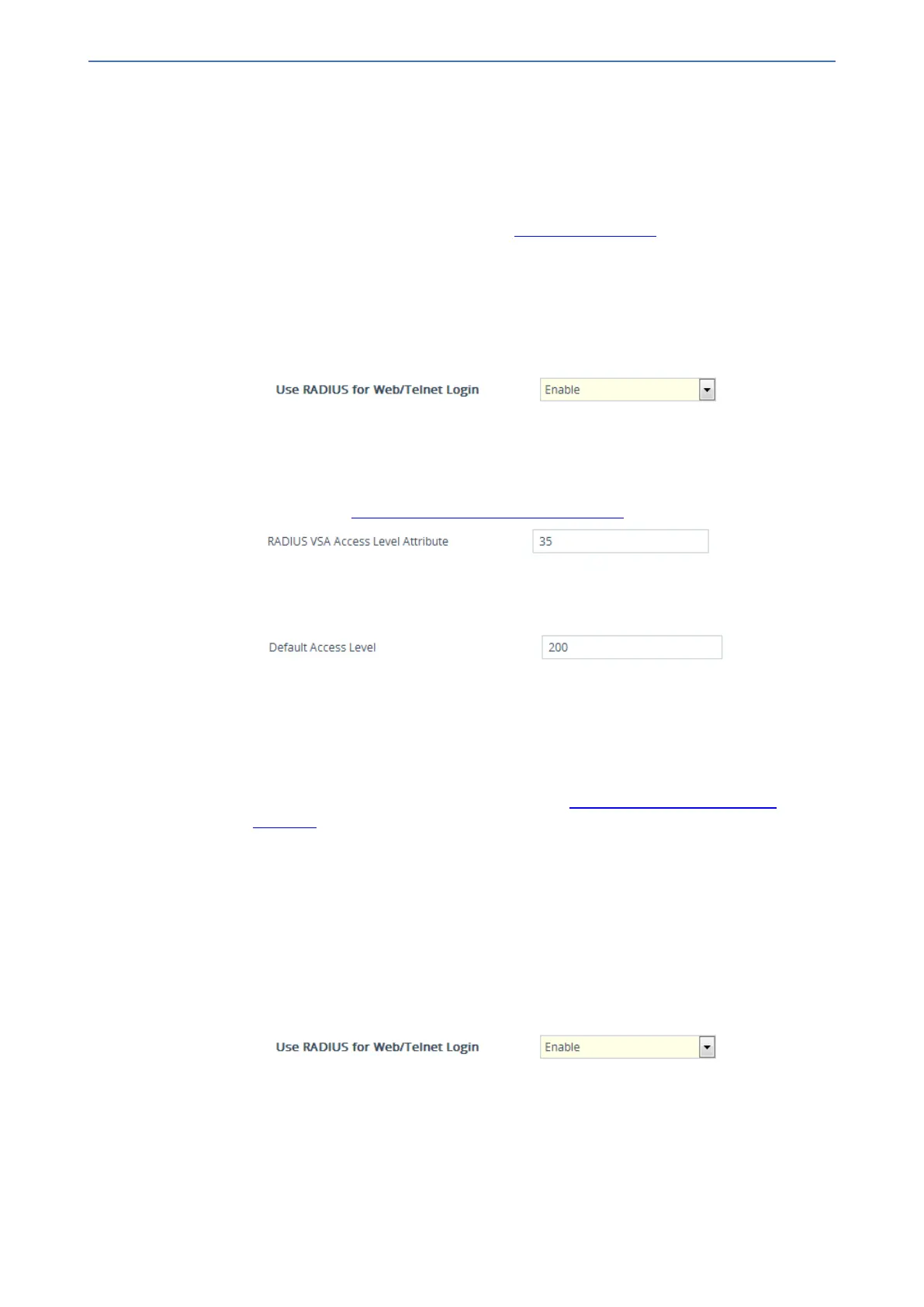CHAPTER16 Services
Mediant 800 Gateway & E-SBC | User's Manual
4. Record and retain the IP address, port number, shared secret code, vendor ID, and VSA
access level identifier (if access levels are implemented) used by the RADIUS server.
Configuring RADIUS-based User Authentication
The following procedure describes how to configure RADIUS-based login authentication. For a
detailed description of the RADIUS parameters, see RADIUS Parameters.
➢ To configure RADIUS-based login authentication:
1. Open the Authentication Server page (Setup menu > Administration tab > Web & CLI folder
> Authentication Server).
2. From the 'Use RADIUS for Web/Telnet Login' drop-down list, select Enable to enable
RADIUS authentication for Web and Telnet login:
3. When implementing Web user access levels, do one of the following:
● If the RADIUS server response includes the access level attribute: In the 'RADIUS
VSA Access Level Attribute' field, enter the code that indicates the access level attribute
in the VSA section of the received RADIUS packet. For defining the RADIUS server with
access levels, see Setting Up a Third-Party RADIUS Server.
● If the RADIUS server response does not include the access level attribute: In the
'Default Access Level' field, enter the default access level that is applied to all users
authenticated by the RADIUS server.
4. Configure RADIUS timeout handling:
a. From the 'Behavior upon Authentication Server Timeout' drop-down list, select the option if
the RADIUS server does not respond within five seconds:
◆ Deny Access: device denies user login access.
◆ Verify Access Locally: device checks the username and password configured
locally for the user in the Local Users table (see Configuring Management User
Accounts), and if correct, allows access.
b. In the 'Password Local Cache Timeout' field, enter a time limit (in seconds) after which the
username and password verified by the RADIUS server becomes invalid and a username
and password needs to be re-validated with the RADIUS server.
c. From the 'Password Local Cache Mode' drop-down list, select the option for the local
RADIUS password cache timer:
◆ Reset Timer Upon Access: upon each access to a Web page, the timer resets
(reverts to the initial value configured in the previous step).
◆ Absolute Expiry Timer: when you access a Web page, the timer doesn’t reset, but
continues its count down.
5. Configure when the Local Users table must be used to authenticate login users. From the 'Use
Local Users Database' drop-down list, select one of the following:
● When No Auth Server Defined (default): When no RADIUS server is configured or if a
server is configured but connectivity with the server is down (if the server is up, the device
authenticates the user with the server).
- 222 -

